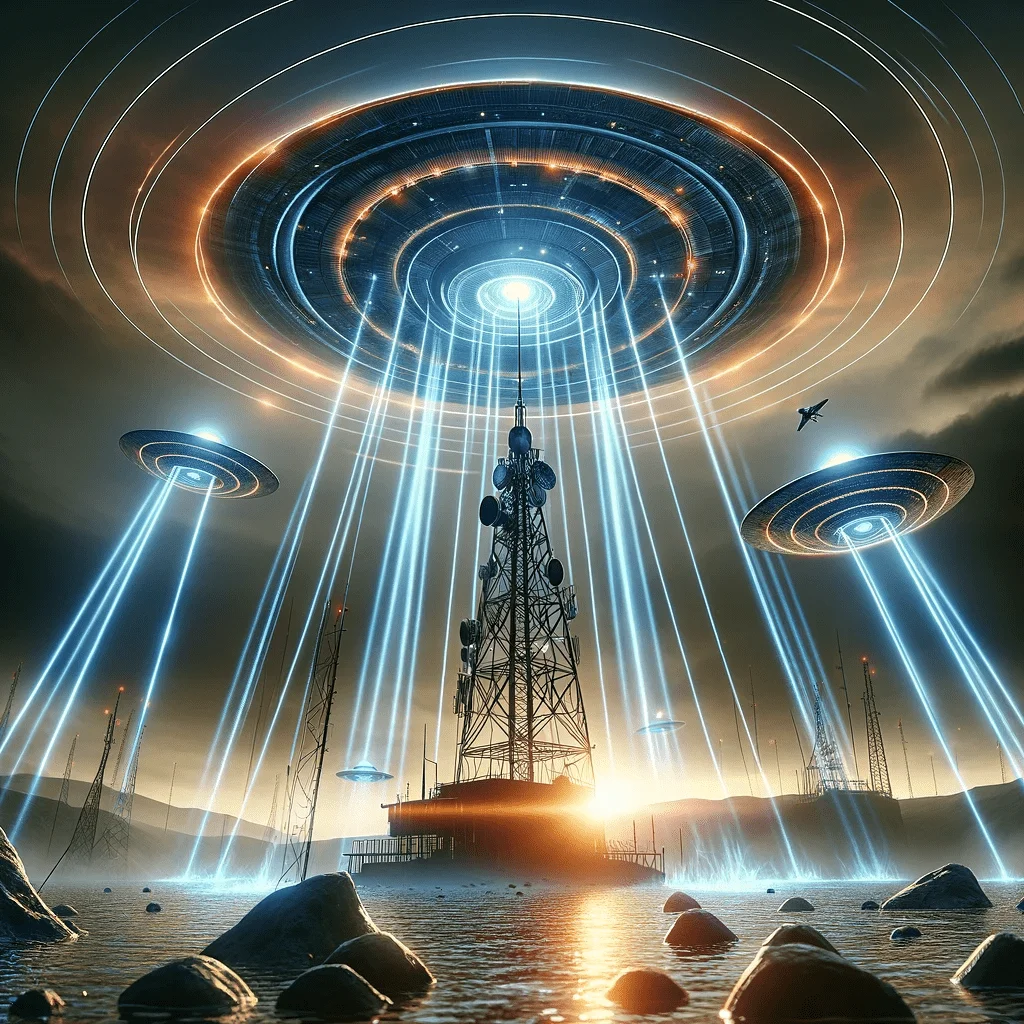High Powered Radar interferes with UFO Saucers

In 1950, an FBI memo was written by Special Agent Guy Hottel, which has recently been declassified and made available to the public. The memo recounts an unverified report from an unnamed informant regarding an alleged incident in New Mexico where a “flying saucer” had been recovered, along with several alien bodies. The memo includes a brief description of the incident and provides no further information on the matter.
The memo is dated March 22, 1950, and was addressed to the Director of the FBI. The memo was classified as “SECRET” at the time it was written. The memo has been declassified and made available to the public through the FBI’s online Vault.
The memo briefly describes the alleged incident, stating that three “flying saucers” were recovered, each containing three humanoid bodies, dressed in metallic cloth. The saucers were described as being circular and approximately 50 feet in diameter.
The document written by Special Agent Guy Hottel is commonly referred to as the “Hottel Memo”.
There are a number of books and publications that have discussed the memo and its implications. For example, in his book “The Day After Roswell,” former Air Force officer Philip J. Corso claims that the memo is evidence of a government cover-up of extraterrestrial visitations to Earth.
The theory suggests that the powerful radar systems used during that time may have interfered with the navigation or propulsion systems of the supposed extraterrestrial craft, leading them to crash.
High-powered radar, also known as “over-the-horizon radar,” uses radio waves to detect and locate objects at long distances. These radar systems work by transmitting a high-frequency radio signal that travels outwards from the antenna and then reflects off objects in its path. The radar system then detects the reflected signal, allowing it to determine the location and distance of the object.
The process of radar detection works as follows: when a radar system transmits a radio signal, it travels outwards in all directions. When this signal encounters an object, some of the energy is reflected back towards the radar system. This reflected signal, or “echo,” is detected by the radar system and used to determine the location, distance, and sometimes even the size and shape of the object.
High-powered radar systems are used primarily for long-range surveillance and monitoring of large areas, such as coastal regions and airspace. These systems are often used to detect and track aircraft, ships, and other large objects at long distances.
The basic components of a high-powered radar system include a transmitter, an antenna, a receiver, and a signal processing system. The transmitter generates a high-frequency radio signal that is sent out from the antenna. The receiver detects the reflected signal from the target object, and the signal processing system analyzes the received signal to determine the location, distance, and other properties of the object.


